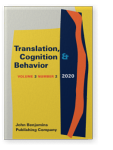Vol. 3:2 (2020) ► pp.165–188
Researching the motivation of Spanish to Chinese fansubbers
A case study on collaborative translation in China
In recent years, the motivation of translators has attracted attention from TS scholars but there is a clear gap about the Chinese context. This paper explores the motivating factors of a Spanish-Chinese fansubbing group of volunteer translators that constitute a community nicknamed The Burrow. It probes into their perceptions in relation to their task and the public, and hints at the possible link between motivation, collaborative translation, and audiovisual content production by fans. A netnographical method was adopted for data gathering, via two questionnaires, a self-designed open-probe survey (OPS) and a modified version of the Volunteer Function Inventory (VFI) proposed by Clary et al (1998). Most fan translators think of themselves as consumers-producers and show traits similar to those of their readers. They believe producing content by themselves is related to higher motivation and also consider a relation between collaborative translation and higher motivation to exist. Self-determination theory was used for the analysis of motivations, and the emerging key motivating factors were understanding, enhancement and values. Passion and attaining experience were the two most important motivators before starting to fansub, and finding friends and having a volunteering platform were the two key motivating factors after becoming fansubbers.
Article outline
- 1.Introduction
- 2.Methodology
- 3.Results and discussion
- 3.1Profile of The Burrow fansubbers
- 3.2Motivations of The Burrow volunteer translatorsxs
- Motivations to start volunteering
- Motivations to volunteer in a fansub
- Motivations to prosume
- Motivations for being a Spanish–Chinese fansub volunteer translator
- 3.3Perceptions of volunteer translators
- Fansubbing as collaborative translation
- State of Spanish content in mainland China
- Relationship between translated content and watched content
- Collaborative translation and higher levels of motivation
- Volunteer translator perceptions about the public
- 3.4Results of VFI survey
- 3.5Results of outcome function survey
- 4.Conclusion
-
References
